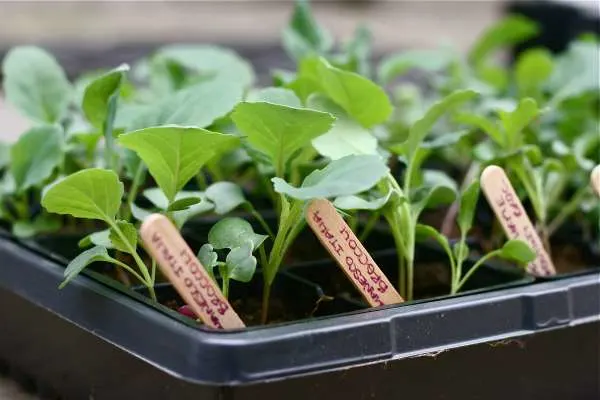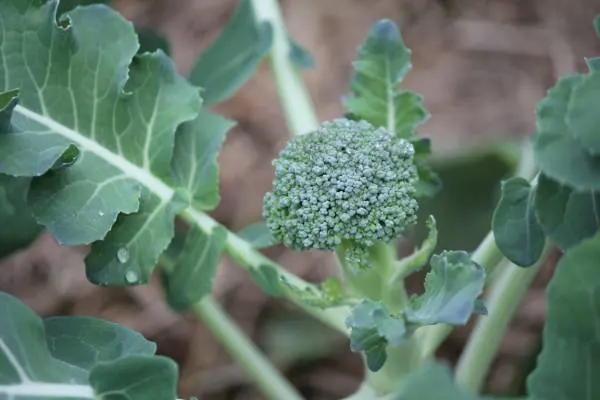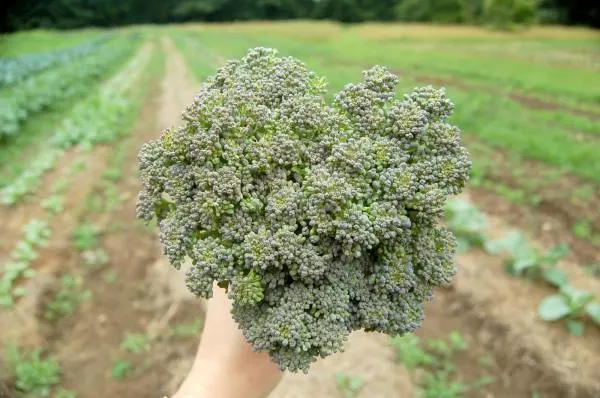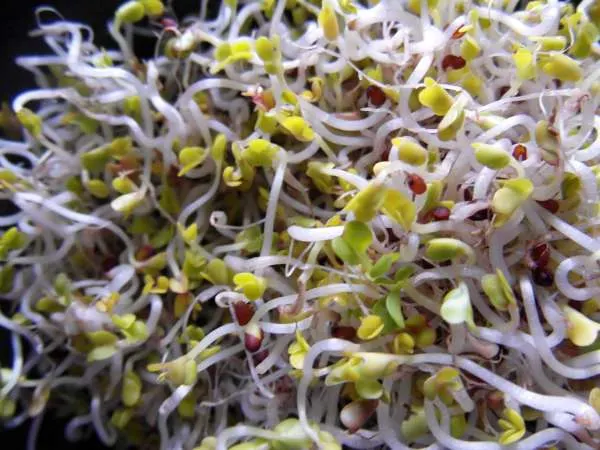The journey of this green cruciferous vegetable from seed to harvest is a captivating one, marked by various stages of growth and development. Understanding these stages is pivotal for both hobby gardeners and commercial farmers to ensure a bountiful and healthy harvest.
Broccoli- Brassica oleracea var, this Brassica species includes cabbage, cauliflower, Brussels sprouts, and kale. It is a member of cole crop.
This guide delves deep into the broccoli plant’s life cycle, shedding light on its transformation and offering insights on how to nurture it every step of the way.

How to Plant Broccoli? – Seed Selection, Planting time, Preparation
Successful cultivation of broccoli begins with a thoughtful selection of broccoli varieties, which should be tailored to your region and desired harvest time. Green magic is one of the hybrid broccoli varieties that is heat tolerant and matures in the shortest time.
Growing broccoli is different from other crops as it is temperature sensitive. Broccoli prefers cooler temperatures between 45°F and 75°F (7°C to 24°C) and is mostly grown in late winter to early spring.
For spring plantings, initiate the broccoli growing process and start seeds indoors in early spring, typically around 6 to 8 weeks before the anticipated last frost date. In contrast, for fall plantings, opt to directly sow broccoli seeds into the soil during the peak of mid to late summer when temperatures are at their warmest.
This strategy ensures that the plants mature during the cooler, more favorable conditions of the autumn season.
Equally vital is the meticulous preparation for the growth of the broccoli plant:
- Choose a sunny spot with at least 6-8 hours of sunlight.
- Ensure to use fertile soil and well-drained soil.
- Soil pH should be neutral to slightly acidic (soil pH 6.0 to 6.8).
- To grow broccoli, incorporate compost or well-rotted manure to enrich the soil.
- Space broccoli plants 15-18 inches apart to allow for growth.
- Water regularly to keep the soil moist consistently, especially during dry spells.
- Use a balanced fertilizer that is not high in nitrogen, as too much nitrogen can cause excessive foliage and prevent the growth of broccoli heads.
- Good air circulation is also important to grow broccoli.
- Do the soil test to start.
Main Stages of Growing Broccoli Plants
Stage #1: Germination
The germination stage is the first milestone to reach to grow broccoli.
After sowing broccoli seeds, broccoli seedlings emerge in 7-10 days. The germination stage is quite shorter for broccoli plants. The seeds that are capable of germination contain both an embryo and essential plant food reserves safeguarded by a protective seed coat.
At this stage, the soil moisture plays a pivotal role. The moist soil softens the broccoli seed coat, acting as the catalyst, triggering internal cells to initiate respiration and the utilization of stored nutrients. This process is called imbibition.
As the seed germinates, the radical or the primary root emerges. Here, broccoli prefers soil temperatures between 45-50°F. The main purpose of radical is to anchor the seedling in the soil and keep it upright. As it anchors the seedling in the soil, it transports the nutrients and water from the soil to the seedling.
After the radical has developed, the shoot emerges – the first shoot of the broccoli plant. It develops and grows upwards. As it emerges above the ground, the main focus of the plant is to develop leaves.
Stage #2: Seedling

Once the seeds have germinated, the broccoli plants enter the second stage – the seedling stage. As the seedlings emerge, the young plants develop shoots but do not possess leaves yet. Currently, the growth process is a bit slow as the seedling has limited resources because it is still getting nutrients from the endosperm.
It needs to develop leaves to start photosynthesis to prepare its own food. At this point, the seedlings develop their first true leaves and become more robust. They require sufficient light and careful watering to continue their growth.
If started indoors, they may need to gradually acclimate to outdoor conditions.
Stage #3: Vegetative Growth

After a few broccoli leaves and roots are developed and started to prepare their own plant food by photosynthesis and taking nutrients from the soil, the plant has entered the vegetative growth stage.
This is the stage between the seedling and the flowering stage, and it will continue for 60-65 days now – being one of the longest stages of the broccoli plant.
Now it is the time when broccoli head begins to form. The stem develops into small green flower buds, often known as “crown”. After that, the branches will emerge from the main stem.
The growing plant is most active at this stage. So, now it will grow wider and taller by about 2-3 feet. It requires ample sunlight, typically at least 6-8 hours of full sun per day, and consistent watering and maintaining rich soil to ensure proper development. The ideal temperature of the plant here is 65-75 F.
Now the broccoli will focus on developing flowers while growing upwards.
Stage #4: Harvesting broccoli

As the broccoli plants mature, they transition to the harvesting or the flowering stage.
At this point, the central head, composed of multiple tightly packed buds which are dark green, becomes prominent often known as head of broccoli. the center head of broccoli is the largest followed by secondary heads.
Flowering starts at this stage and here the temperature maintained should be 70 or above. Now its time to check upon your broccoli plant regularly as they will be ready to harvest soon.
The flower head it the edible part before the blooming starts.
The best time to harvest broccoli large heads is when the size of the center head is generally around 6-8 inches (15-20 cm) in diameter with branches combined.
Additionally, some varieties may produce smaller side shoots after the central broccoli head is harvested, extending the harvesting period.
Timing is crucial in harvesting broccoli . Harvest immediately, if you wait too long, the buds begin to open and show small yellow flowers, indicating over-maturity. Over-mature broccoli can be tough and less flavorful.
Post-harvest Secondary Growth (optional)
Post-harvest secondary growth of broccoli presents an optional yet rewarding opportunity for gardeners.
After the main head has been harvested, many broccoli crop species can surprise you with a bonus round of growth in the form of good side shoot production, often called “broccoli spears” or “broccolini.”
Thesesecondary heads, found in the leaf axils, can be harvested when they reach a modest size of 3-6 inches (7.5-15 cm) with tightly closed florets.
By continuing to care for your broccoli plants and nurturing their post-harvest development, you can extend your broccoli harvest over several weeks.
End of Growing Season
As the growing season for broccoli nears its end, a remarkable transformation unfolds, with the emergence of small, yellow flowers on the broccoli plants.
These blossoms signal a shift in the plant’s priorities, transitioning from producing edible heads to the crucial task of reproduction. Given time, these flowers mature into seed pods, encapsulating the potential for future broccoli crops.
To harvest seeds from these pods, patience is key. Allow the pods to fully develop and turn brown before carefully collecting them. Once collected, the seeds should be extracted and left to dry thoroughly.
Harvesting broccoli seeds from flowers not only offers the opportunity to save and propagate your own broccoli varieties, tailored to your specific growing conditions, but also provides a cost-effective means of securing seeds for subsequent planting seasons.
This practice effectively closes one chapter of the growing season while laying the groundwork for the next.
FAQs
What’s the average time to grow broccoli?
On average, it takes about 60 to 85 days from planting seeds to harvesting mature broccoli heads, depending on the variety and growing conditions.
When should I transplant broccoli seedlings into the garden?
Transplant broccoli seedlings into the garden when they are 4-6 weeks old and have a few true leaves. This is usually in early spring after the last frost.
How long does it take for broccoli seeds to germinate?
A: Broccoli seeds typically germinate in about ten to fourteen days, depending on environmental conditions.
Conclusion
In conclusion, understanding the stages of growing broccoli plants is essential for successful cultivation.
From the initial germination phase, where tiny seeds spring to life, to the development of robust seedlings in the seedling stage, followed by the lush vegetative growth and, ultimately, the harvesting stage, each phase plays a crucial role in the journey of nurturing broccoli from seed to harvest.
Timely and attentive care throughout these stages ensures a bountiful and flavorful yield. Moreover, post-harvest opportunities like secondary growth and seed collection offer ways to maximize the benefits of your broccoli plants.
Embracing these stages not only enriches your gardening experience but also provides a source of nutritious and delicious broccoli for your table. With knowledge and dedication, the stages of growing broccoli become a rewarding journey towards a satisfying harvest.

